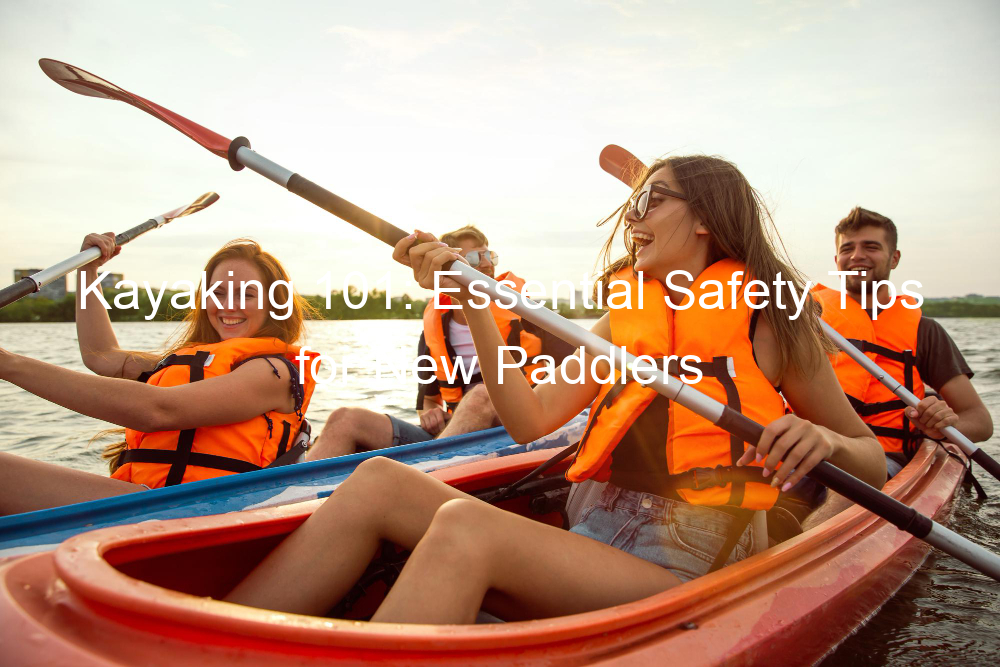Introduction to Kayaking for Beginners
Welcome to the exciting world of kayaking! If you’re a beginner, this guide will help you understand the basics of kayaking and why safety is so important. Let’s dive in!
- Understanding the basics of kayaking
- Why safety is paramount in kayaking
Now that you understand the basics of kayaking and the importance of safety, you’re ready to start your kayaking adventure. Remember, practice makes perfect, and safety should always be your top priority. Happy kayaking!
Beginner Kayaking Guide: Safety Measures in Kayaking
Before you hit the water in your kayak, it’s crucial to take some safety measures. These steps can help ensure your kayaking adventure is fun, exciting, and safe.
Essential Kayaking Tips: Pre-Trip Preparations
Before you start your kayaking trip, there are a few essential things you need to do. Let’s take a look at them:
- Checking weather conditions
- Planning your route
- Informing someone about your trip
Remember, safety should always be your top priority when kayaking. By taking these pre-trip precautions, you can help ensure a safe and enjoyable experience on the water.
Basic Kayaking Safety: On-Water Precautions
When you’re out on the water, safety should always be your top priority. Here are some key on-water precautions you should always keep in mind:
- Staying alert to surroundings: When you’re kayaking, it’s essential to stay aware of your surroundings. This includes not only the water and other vessels, but also the weather and wildlife. You never know when a sudden change in weather or an unexpected animal encounter could occur. Always keep your eyes and ears open, and stay alert to potential hazards.
- Keeping a safe distance from other vessels: It’s important to always maintain a safe distance from other vessels on the water. This includes both motorized and non-motorized boats. Remember, other boaters may not see you or be able to maneuver as quickly as you can in your kayak. By keeping a safe distance, you can avoid potential collisions and ensure everyone on the water stays safe.
- Understanding and following navigation rules: Just like driving a car, there are rules for navigating on the water. These rules help to prevent accidents and ensure everyone can enjoy the water safely. Make sure you understand these rules and always follow them. This includes things like always paddling on the right side of the waterway, giving way to larger vessels, and using lights at night or in poor visibility conditions.
Remember, safety is always the most important thing when you’re out on the water. By staying alert, keeping a safe distance from other vessels, and understanding and following navigation rules, you can ensure a safe and enjoyable kayaking experience.
Kayaking Safety Equipment: Must-Haves for Every Paddler
When it comes to kayaking, safety should always be your top priority. Whether you’re a beginner or an experienced paddler, there are certain pieces of safety equipment that you should always have with you. Let’s take a look at these must-have items:
- Personal Flotation Device (PFD)
- Helmet
- First Aid Kit
- Communication Device
In conclusion, kayaking is a fun and exciting activity. But like any other sport, it comes with risks. By equipping yourself with these safety items, you can ensure a safe and enjoyable kayaking experience.
Beginner’s Guide to Safe Kayaking: Handling Emergencies
Emergencies can occur at any time while kayaking, especially for beginners. But don’t worry! With the right knowledge and preparation, you can handle these situations effectively. Let’s explore some common emergencies and how to deal with them.
Kayak Safety Precactions: Capsizing and Recovery
One of the most common emergencies in kayaking is capsizing. It can be scary, but with the right steps, you can recover safely. Here are some steps to follow:
- Staying calm and composed: It’s natural to panic when your kayak capsizes. However, it’s important to stay calm. Remember, your life jacket will keep you afloat. Take deep breaths and focus on the next steps.
- Executing a wet exit: If you’re trapped in the kayak, you’ll need to perform a wet exit. This involves releasing your spray skirt (if you have one) and pushing yourself out of the kayak. Practice this in a safe environment before you go kayaking.
- Performing a self-rescue or buddy rescue: Once you’re out of the kayak, you can attempt a self-rescue by flipping the kayak back over and climbing back in. If you’re kayaking with others, you can perform a buddy rescue where they help you get back into your kayak. Learn more about kayak rescues here.
Remember, practice makes perfect. The more you practice these steps, the more confident you’ll be if you ever capsize. Stay safe and enjoy your kayaking adventure!
Kayaking Safety for Beginners: Dealing with Injuries
When you’re out on the water, it’s crucial to know how to handle injuries. Here are some steps you can take to ensure safety:
- Administering basic first aid
- Signaling for help
- Evacuation and getting professional medical help
Remember, safety should always be your top priority when kayaking. Always carry a first aid kit, know how to signal for help, and be prepared to evacuate if necessary. Stay safe and enjoy your kayaking adventure!
Conclusion: Kayaking Safety is a Continuous Learning Process
As we wrap up our discussion on kayaking safety, it’s crucial to remember that safety isn’t a one-time thing. It’s a continuous learning process. Let’s dive into why this is so important.
- Importance of Regular Practice
- Continual Learning and Upgrading Skills
- Staying Updated on Latest Safety Guidelines
In conclusion, kayaking safety is not a destination, but a journey. It requires regular practice, continual learning, and staying updated on the latest safety guidelines. So, keep paddling, keep learning, and most importantly, stay safe out there!






